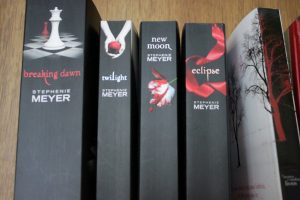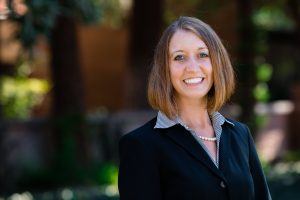
Written by guest blogger Melanie A. Howard.
It all started harmlessly enough. Trying to unwind from long days of studying for my comprehensive doctoral exams, I picked up Stephenie Meyer’s novel Twilight to provide some light, mindless entertainment. As one friend helped me justify the reading choice, “Sometimes you want a 5-course steak dinner; other times you just want a Twinkie.” Twilight was my Twinkie.
However, what began as a secret guilty pleasure began to morph into something else. I found myself reading the Second Temple Jewish novel Joseph and Aseneth and thinking, “Hm, Aseneth and Bella seem to have some things in common as characters.” I found myself reflecting to a colleague, “You know, Bella’s conversion into being a vampire in Twilight could be interesting to study in light of research on religious conversions.” I was developing a pop culture problem that was infiltrating what was supposed to be the serious realm of scholarly inquiry.
I felt guilty for even thinking about such connections. After all, isn’t research supposed to be dry and appeal only to an elite group of scholars who focus on only the smallest nuances of an argument? So, I tried to store away my flirtation with pop culture and its possible blending with the ancient religious literature that I was supposed to be studying as a biblical scholar.
Like most secret affairs, though, this flirtation came to light. I simply could not get the parallels between Joseph and Aseneth and Twilight out of my head. The more I thought about it, the more that I realized that the experience and documentation of women’s conversions was not only a legitimate research issue but was also a contemporary topic of concern, as evidenced by the popularity of the Twilight franchise1 and its depiction of a woman’s conversion.
Working on the project that culminated in my recent article in the Journal of Religion and Popular Culture “Romanticizing Conversion Narratives: Women, Change, and Female Agency in Twilight and Joseph and Aseneth” proved to be one of the most enjoyable scholarly endeavors that I have undertaken. Who says that all scholarship has to be dry and boring?
I found that in the process of working on research that is fun for me, I am also able to communicate the scope of my research beyond a narrow field of elite experts. Although there are undoubtedly technical components of my argument that will likely elude some lay readers who are not especially conversant with late Second Temple literature, the article is one that I can describe to students, friends, and neighbors in a way that they can understand.
What began as a guilty pleasure, then, has morphed into a scholarly pursuit that not only advances my small corner of academia, but also translates well to a larger audience beyond the scholarly elite. In other words, by setting out in a direction that was just downright fun, I discovered of way of doing scholarship that resonated with my own identity beyond that of a scholar alone. I can only imagine the impact on academia, society, and cultures at large if more of us dared to have fun with scholarship.

Dr. Melanie A. Howard is Assistant Professor and Program Director of Biblical Studies at Fresno Pacific University. Dr. Howard holds a Ph.D. in New Testament from Princeton Theological Seminary where she wrote her dissertation on the portrayal of mothers in the Gospel of Mark. Her current research continues in similar veins, exploring portrayals of women in biblical texts and the study of the Gospel of Mark. Her latest article in The Journal of Religion and Popular Culture entitled “Romanticizing Conversion Narratives: Women, Change, and Female Agency in Twilight and Joseph and Aseneth” is free to read for a limited time here.
Endnotes
1 By an estimate in Forbes, the movies alone grossed roughly $2.5 billion. That figure does not include book sales, DVD sales, or other merchandise sales related to the franchise.
Comments on this entry are closed.